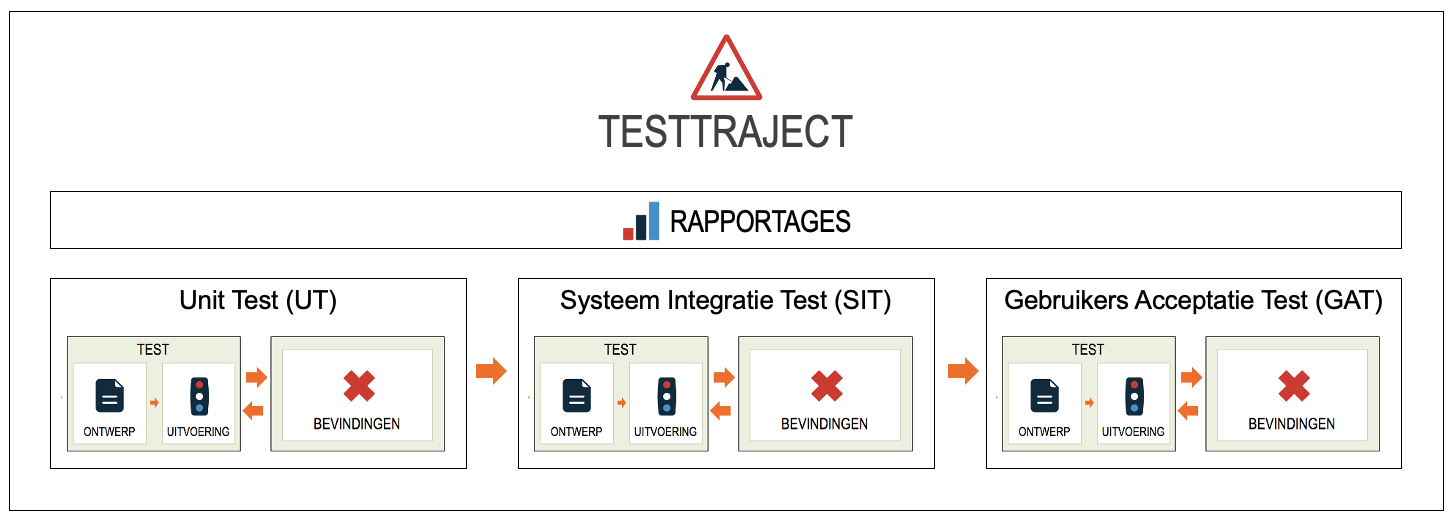Test cycles
Each change, release, or project is housed in Testersuite in a Test cycle. Within a Test cycle the following test activities take place:
- Register the products and requirements to be tested;
- Performing a product risk analysis
- Specify the situations to be tested (test cases and test scenarios);
- Plan, execute and coordinate test cases (test runs);
- Register and coordinate the (test)defects;
- Report on test coverage and progress.
Test Types
In the more complexTest cycles testing activities are often grouped into so-called test types. Examples of common test types are: unit test, system test and user acceptance test. The unit and system test are generally performed by IT people. The user acceptance test is usually performed by business people (the users of the system).
In Testersuite , within Test cycles a classification is made in test types. Which test types are available may vary by organization. The Testersuite administrator within your organization can create new test types and change existing test types.
For clarification, the following figure shows the relationship between Test cycles, test types and test activities is shown:

From the design of test cases and test scenarios can be distinguished into different test types. Subsequently, test runs can be scheduled per test type and the test findings are generated from a particular test type. In the reporting module it is possible to report per test type. For example, the progress of running tests for the GAT.
If a Test cycle is not to be classified based on test types but there is a need for a different phasing within the Test cycle then that is also possible. In that case, an administrator can give the Test Types field in the customizing a different name, for example Sprint. The values of the field are then changed from UT, SIT, GAT to sprint 1, sprint 2 and sprint 3, for example. It is then possible within a Test cycle to classify the activities per sprint and to report per sprint.